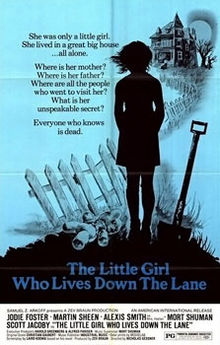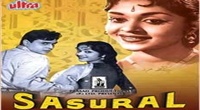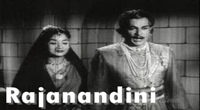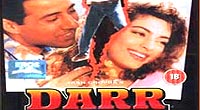The Little Girl Who Lives Down the Lane is a 1976 cross-genre film directed by Nicolas Gessner and starring Jodie Foster, Martin Sheen, Alexis Smith, Mort Shuman, and Scott Jacoby. It was a co-production of Canada and France and written by Laird Koenig, based on his 1974 novel of the same title.
| The Little Girl Who Lives Down the Lane | |
|---|---|
Promotional poster for U.S. release | |
| Directed by | Nicolas Gessner |
| Produced by | Zev Braun |
| Written by | Laird Koenig |
| Based on | The Little Girl Who Lives Down the Lane by Laird Koenig |
| Starring |
|
| Music by | Christian Gaubert |
| Cinematography | René Verzier |
| Edited by | Yves Langlois |
| Distributed by |
|
Release date |
|
Running time | 91 minutes |
| Country |
|
| Language | English |
The plot focuses on 13-year-old Rynn Jacobs (Foster), a child whose absent poet father and secretive behaviours prod the suspicions of her conservative small-town Maine neighbours. The adaptation, originally intended as a play, was filmed in Quebec on a small budget. The production later became the subject of controversy over reports that Foster had conflicts with producers over the filming and inclusion of a nude scene, though a body double had been utilized. After a screening at the 1976 Cannes Film Festival, a court challenge was launched regarding distribution, and a general release followed in 1977.
Initially released to mixed reviews, with some critics finding the murder mystery plot weak but Foster's performance more meritorious, the film won two Saturn Awards, including Best Horror Film. It subsequently obtained cult status, with later critics positively reviewing the screenplay. Writers and academics have interpreted it as a statement on children's rights and variously placed it in the thriller, horror, mystery or other genres.
Screenplay
On Halloween in the seaside town of Wells Harbor, Maine, Rynn Jacobs is celebrating her thirteenth birthday alone in her father Lester's house. Lester was a poet and the two recently moved from England, where he leased the house for three years. Frank Hallet, the adult son of landlady Cora Hallet, visits and makes sexual advances toward Rynn. Cora Hallet later arrives at the house, searching for Rynn's father. Rynn claims he is in New York and taunts the landlady about her son. The situation becomes more tense when Mrs. Hallet insists on retrieving her jelly glasses from the cellar. Rynn steadfastly refuses to let her into the cellar, and Mrs. Hallet leaves. She returns later, and, ignoring Rynn's warnings, opens the trapdoor to go into the cellar. Suddenly terrified by something she sees, Mrs. Hallet attempts to flee, but accidentally knocks down the cellar door support, fatally hitting her head on the door.
Trying to hide evidence of Mrs. Hallet's visit, Rynn goes outside to move her car. Her inability to start it attracts the attention of Mario, a young magician and the nephew of Officer Miglioriti. Mario helps her move the car, and they have dinner together at Rynn's house. Miglioriti stops by to tell them that Frank Hallet has reported his mother missing, and asks to see Rynn's father, but Mario covers by saying that her father has gone to bed. Later that night, Frank Hallet makes a surprise visit. Suspicious, and looking for answers about the whereabouts of his mother and Rynn's father, he tries to scare Rynn into talking by killing her pet hamster. Mario chases Frank away, and Rynn now trusts him enough to show him her secret. Her terminally ill father and abusive mother divorced long ago. To protect Rynn from being returned to her mother's custody after his death, he moved them to an isolated area and made plans to allow Rynn to live alone, then committed suicide in the ocean so that his body would not be found. He also left Rynn with a jar of potassium cyanide, telling her that it was a sedative, to give to her mother if she ever came for her. Rynn coolly recounts how she put the powder in her mother's tea and watched her die. She learned embalming at the library in order to hide the body in the cellar.
The trust between Rynn and Mario blossoms into romance. They bury the corpses in the garden during a heavy rain, and Mario catches a cold. Miglioriti, suspicious of Rynn's excuses for her father's absence, again returns to the house. When he asks to see her father, Mario, disguised as an old man, comes down the stairs and introduces himself as Lester Jacobs. After winter sets in, Rynn learns that Mario's cold has developed into pneumonia and he is in the hospital. Rynn goes to see him, but he is unconscious, and she feels lonelier than ever before. That night, as Rynn is going to bed, she is shocked to find Frank coming out of the cellar. Having put the pieces together and knowing the truth about Rynn's parents, he attempts to blackmail her, offering to protect her secrets in exchange for sexual favours. Rynn, seemingly defeated and resigned to Frank's demands, agrees to his suggestion that they have a cup of tea. Rynn places a dose of the potassium cyanide into her own cup and then takes the tea and almond cookies to the living room. Suspicious, Frank switches his cup with hers, and Rynn watches as he begins to succumb to the poison.
- Jodie Foster as Rynn Jacobs
- Martin Sheen as Frank Hallet
- Alexis Smith as Mrs. Hallet
- Mort Shuman as Officer Miglioriti
- Scott Jacoby as Mario
Felicia Feaster, writing for Turner Classic Movies, found an "unusual theme" in the film, which she interpreted as being one of independence for children. Professor James R. Kincaid read the film as a call for children's rights. T.S. Kord wrote the film argued that a child with money and a home does not need a parent if he or she does not believe it is necessary. The adults who attempt to intrude in Rynn's affairs are a threat, including her mother, her landlord, and the molester.
Writer Anthony Synnott placed The Little Girl Who Lives Down the Lane in a trend of sexualizing children in film, calling Rynn the "murdering nymphet" and comparing her to Foster's child prostitute character Iris in Taxi Driver (1976). Anthony Cortese also referred to Foster as giving an "encore performance" of Taxi Driver, calling Rynn "a 13-year-old imp of maturing sexuality". Scholar Andrew Scahill described it as fitting a cinematic narrative of children in rebellion, one in which the child appears seemly, as with The Innocents (1961), The Omen (1976) and others.
The genre has been debated, with Feaster arguing it was more psychological thriller than horror. Jim Cullen summed the film up as "a strange hybrid" of genres, being a horror, thriller and feminist film. Kord listed it among dramas about "Eerie, malevolent or criminal children", distinct from depictions of children in the supernatural horror genre. Martin Sheen said it was a horror film in some ways, but "not overt", with mystery and suspense elements. However, director Nicolas Gessner denied it was horror, characterizing it as "a teenage love story".
Development
Novelist Laird Koenig adapted the book himself. Originally, the script was intended as a play, but this idea was abandoned due to the belief that a young actress would not be available to play Rynn for an extended period. Gessner read the book, only to find rights were optioned to Sam Spiegel, but the project was derailed due to creative differences, allowing Gessner to secure them.
The film followed tax incentives for cinema offered by the government of Canada, beginning in 1974, stimulating a "Hollywood North". It was a co-production of Canada and France, with Zev Braun producing as head of Zev Braun Productions, based in Los Angeles, alongside L.C.L. Industries in Montreal and Filmedis-Filmel in Paris. Canadian producer Denis Héroux, who during the decade specialized in popular cinema with financiers from outside the country, also worked on the project. It was shot on a small budget. Financiers disliked how in the novel, Rynn murdered Mrs. Hallet with poisonous gas, causing the scene to be rewritten so the death is accidental.
Casting
Director Martin Scorsese was editing Alice Doesn't Live Here Anymore, and Gessner's look at his work led him to discover Jodie Foster. With the guidance of her mother Brandy, Jodie took the role of Rynn, and turned 13 while the film was being shot. She wore a wig for the film, and a gap was added in her teeth.
Sheen said he was contacted by Gessner personally about playing Frank Hallet, which Sheen accepted because he found the part intriguing and because he believed Foster had a promising career. Gessner claimed Sheen was initially more interested in playing Mario, but Gessner persuaded Sheen that he was too old for that part. Gessner noted that casting Alexis Smith, who was born in Canada, also helped secure Canadian tax incentives.
Filming
The Little Girl Who Lives Down the Lane was filmed in Montreal and Knowlton, Quebec. Sheen described the set as relaxed and as encouraging creativity, and said Foster also built a friendship with his daughter Renée Estevez during shooting.
A producer's desire for "sex and violence" led to a nude scene depicting Rynn being added to the film. Foster strongly objected, saying "I walked off the set". As a result, her older sister Connie acted as the nude double. Her mother had suggested Connie, who was 21 at the time. Following the release of Taxi Driver, the industry shared stories of Foster having conflicts during the production of The Little Girl Who Lives Down the Lane. However, Gessner claimed Foster only regretted the scene after it was shot, and her request that it be deleted was denied by the Canadian producers.
The crew built a false trapdoor for Mrs. Hallet's death scene, though Gessner acknowledged Smith was nervous about the effect. For the scene where Frank Hallet kills the hamster Gordon, Sheen handled a dead and frozen rodent, and attempted to make it seem like it was still alive. Sound effects of squealing were also added. The dead hamster was obtained from a hospital which carried out animal research, while the live hamster portraying Gordon in other scenes was given to the costume designer after production.
 Story of movie The Little Girl Who Lives Down The Lane :
Story of movie The Little Girl Who Lives Down The Lane : .jpg)




.jpg)
.jpg)
.jpg)
.jpg)












